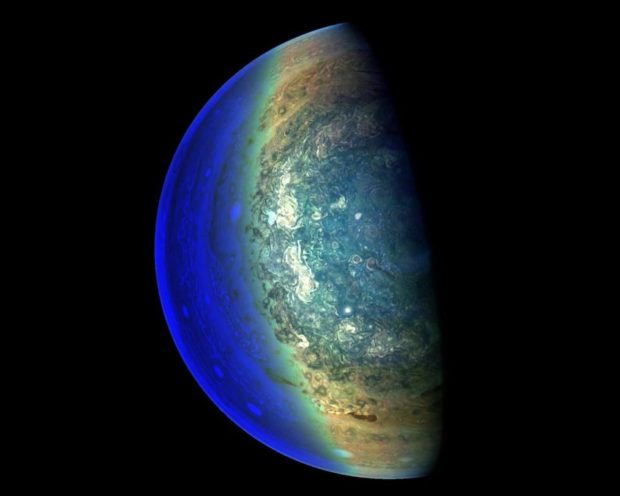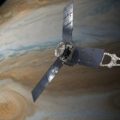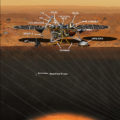“Galileo viewed the stripes on Jupiter more than 400 years ago”, said Yohai Kaspi, Juno’s co-investigator from the Weizmann Institute of Science, Rehovot, Israel. Are the colorful bands, caused by belts of strong winds circling the planet, just a pretty surface phenomenon, or are they a significant stratum of the planet?
Jupiter’s tempestuous, gassy atmosphere stretches some 3,000 kilometers deep and comprises a hundredth of the planet’s mass, studies based on observations by NASA’s Juno spacecraft revealed Wednesday.
“These astonishing science results are yet another example of Jupiter’s curve balls, and a testimony to the value of exploring the unknown from a new perspective with next-generation instruments”, said Scott Bolton, Juno’s principal investigator at the Southwest Research Institute, San Antonio, in a statement from NASA’s Jet Propulsion Laboratory.
Juno is only the second spacecraft to orbit Jupiter, the first was NASA’s Galileo mission that orbited the gas giant from 1995 to 2003.
An worldwide team of physicists studied the gas giant’s atmosphere by measuring its gravity field using using radio waves emitted by NASA’s Juno spacecraft during close flybys.
The asymmetry of the gravitational field allowed the researchers to estimate that the depth of its atmosphere. Thus by measuring the imbalance – changes in the planet’s gravity field – their analytical tools would be able to calculate how deep the storms extend below the surface.
As these ferocious winds relentlessly circle the planet, they disrupt the even distribution of mass on the planet.
Kaspi’s calculations and results from Juno revealed asymmetry in the gravitational fields between north to south.
Here’s another finding, courtesy of Juno: Unlike Saturn’s enigmatic hexagonal (six-sided polygon) cloud structure over the ringed gas giant’s north pole, Jupiter’s northern cyclones form an octagonal (eight-sided) grouping. In addition to determining the depth, Kaspi and Galanti also developed a method to determine precisely how those flows change with depth.
“That is much more than anyone thought and more than what has been known from other planets in the Solar System”, says Kaspi. Although this doesn’t sound like much, it is actually a huge amount considering that Earth’s atmosphere is less than a millionth of its total mass. “That is basically a mass equal to three Earths moving at speeds of tens of meters per second”.
Jonathan Fortney of the University of California, Santa Cruz, who was not involved in the research, called the findings “extremely robust” and said they show “high-precision measurements of a planet’s gravitational field can be used to answer questions of deep planetary dynamics”.
It has not yet been determined if Jupiter has a solid core or not, but it has been suggested in a separate study – led by Professor Tristan Guillot of the Observatoire de la Cote d’Azur – that between the core (if there is one) and the circling winds, that the gas rotates more or less as a single body, nearly as if it were a solid.
An illustration depicting the US space agency’s Juno spacecraft in orbit above Jupiter’s Great Red Spot.




